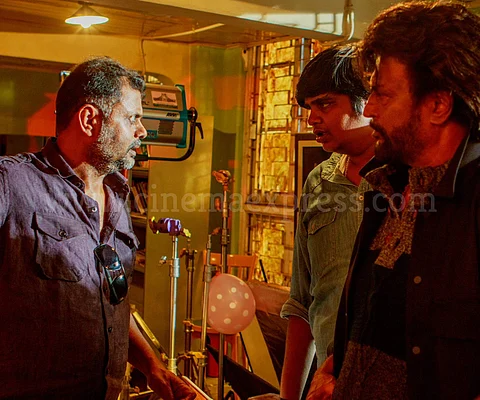

The fatigue in cinematographer Tirru's voice is quite evident as he calls me at ten thirty at night for a chat about Rajinikanth's Petta. "I've been shooting from 5 am for Priyadarshan’s period drama, Kunjali Marakkar, starring Mohanlal," he says. However, he instantly livens up as we begin to talk about his latest film with director Karthik Subbaraj, and the phenomenon that is Rajinikanth.
Excerpts from the conversation:
You have collaborated with Karthik Subbaraj for the second time within a year, after the ambitious Mercury.
For Mercury, Karthik approached me with an outrageous plot. While working together in giving a visual form to his rather abstract ideas, we realised that we were on the same page in dramatising simple conflict. In addition to being challenging, it was a great learning experience for both of us. Petta was also challenging, but in a very different way. The Superstar factor demanded that every scene be maximally dramatised, and our previous work-chemistry came in handy. Together, we've made sure that each and every scene in Petta has a buildup, tease and a pay-off.
What was your contribution to Rajinikanth’s new look in Petta?
Karthik and I being fans of Superstar, we decided, right at the outset, that we were going to show Rajini sir in a certain way. His look in the present, where he is vying for revenge, occupies the majority of the film. This character, despite living alone, considers the people around him as his extended family. Wanting to set an example to his wards, he is always well-groomed, youthful, enthusiastic and brimming with life.
Vintage Rajini is known for his stylish fast moves. How did you manage to nail it in Petta?
We didn’t do much, to be frank. We just let him be. Our responsibility was just to capture the moments of ‘high’ that he keeps throwing at us. The style, the aura, the mass, the magic… it's all inherent in him.
Each of your films has had one dominant colour tone. It was green for Mercury and golden yellow for 24. How do you determine these? And what can you tell us about the colour palette in Petta?
Since Mercury was about the implications of mercury poisoning in a developing country, we wanted to come up with a visual equivalent to represent the horror stories of industrialisation. At that time, one of my close friends, director Barathan, suggested that I use the dark green side of the colour spectrum to depict ‘poison’. 24, on the other hand, was set in fantasy land. I was, therefore, looking for ways to sell the outrageous time-travel plot to the audience. The golden-colour tone, which we hit upon on a random brainstorming session, came to our rescue in the end, making the entire story-arc believable.
As for Petta, it is a film filled with anger. The usual practice when shooting the backstory is to use a lot of colours for depicting the once-happy life of the protagonist. But, I didn’t use any dominant colour tone for the flashback, as it was primarily about the wrong that was done to the lead character, and his resultant anger. So I treated this entire Madurai stretch as ‘documentation’ and shot them maximally in natural light. As opposed to this, when it comes to the character in the present, he is plotting his revenge. Accordingly, we used multiple tones and experimented with shadows to elevate and dramatise the visuals. The ambience in Dehradun, Missourie, and Darjeeling made the kind of misty greenery in the background, that Karthik had visualised, possible.
What are the challenges when working in a multi-starrer like Petta?
The first challenge is the communication with the actors. Each actor might have a different way of reacting to feedback. On the technical front, I need to dramatise characters according to the scene requirements; at times the antagonist, being the star that he is, has to come out dominant, while the lead has to supervene in another. Finding the right moment to elevate the right characters, among the galaxy of stars, is the challenge.
Having started off from Kamal Haasan’s school of film-making, how different was it to work with Rajinikanth?
Kamal sir, being the versatile artist that he is, gets involved in the craft right from the preliminary discussions. I learned a lot from him. Rajini sir’s strength is his magical charisma, and his enthusiasm which belies his age. Though a superstar, he readily submits to the director’s vision. In a way, you can say that they are polar opposites.